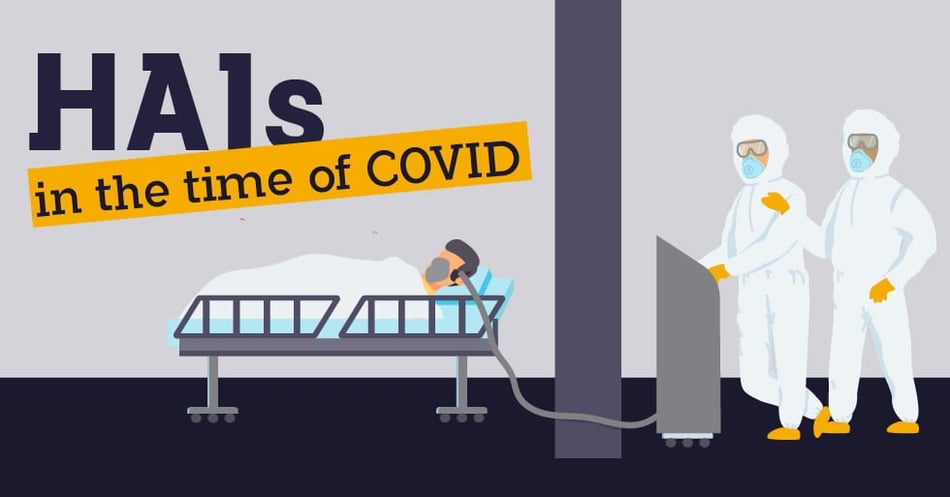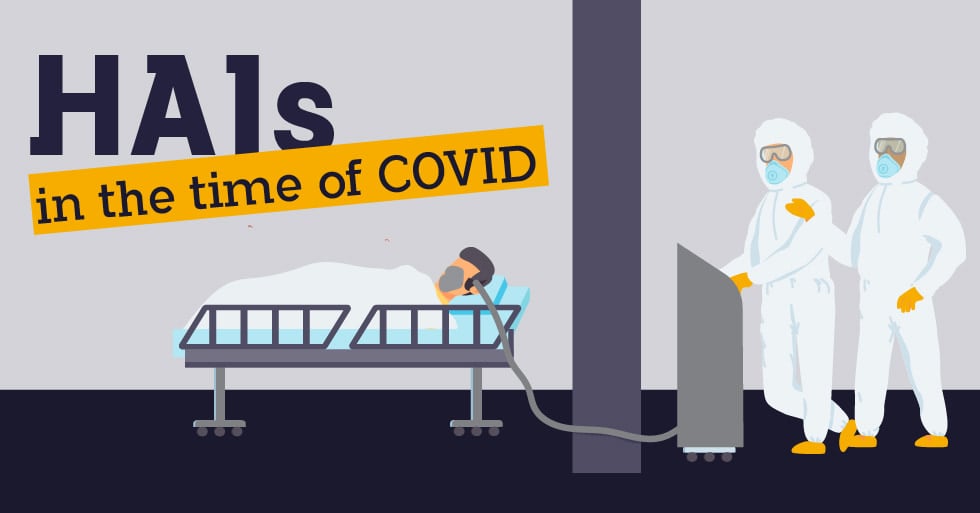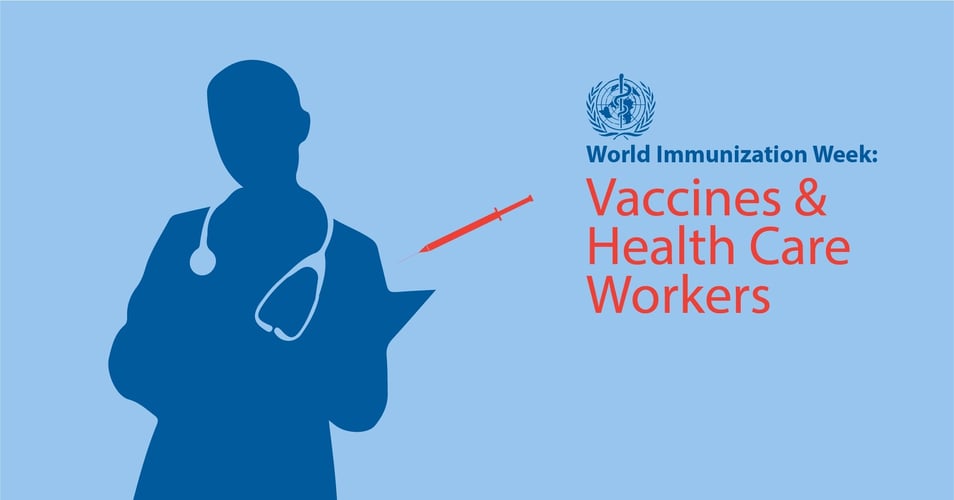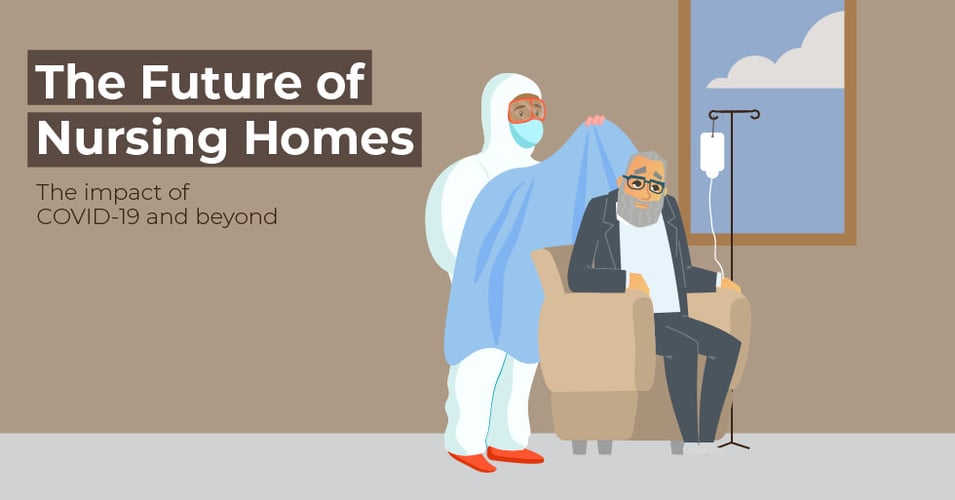HAIs In The Time of COVID-19

 When the cases of COVID-19 started to explode in the spring of 2020, the Centers for Medicare and Medicaid Services (CMS) suspended reporting of hospital-acquired infections (HAIs) until June of that same year. In an effort to alleviate the unprecedented strain on staff and time, this suspension enabled infection prevention teams to concentrate all their efforts on responding to COVID-19. Surveillance is now beginning to catch up, with reports emerging of how COVID-19 affected HAI cases and rates. In today's post, we'll look at what some of that preliminary data says about how we are faring as a nation in preventing HAIs while simultaneously fighting a global pandemic.
When the cases of COVID-19 started to explode in the spring of 2020, the Centers for Medicare and Medicaid Services (CMS) suspended reporting of hospital-acquired infections (HAIs) until June of that same year. In an effort to alleviate the unprecedented strain on staff and time, this suspension enabled infection prevention teams to concentrate all their efforts on responding to COVID-19. Surveillance is now beginning to catch up, with reports emerging of how COVID-19 affected HAI cases and rates. In today's post, we'll look at what some of that preliminary data says about how we are faring as a nation in preventing HAIs while simultaneously fighting a global pandemic.
Sicker Patients | One of the first shifts that could raise HAI rates comes down to demographics. When the nation went into "lockdown" in the spring, one of the first responses by the medical field was to suspend elective procedures and delay those treatments that could wait. The result was a concentration of sicker, more vulnerable patients in the hospital: These were the patients that could not wait for treatment. So from a statistical point of view, the rates of HAIs is expected to go up due to the elimination of younger, healthier patients from the equation. Sicker patients also tend to require more indwelling devices, such as central lines and catheters, which are also associated with greater HAI risk.
Protecting Healthcare Workers | From the beginning of the pandemic, healthcare workers (HCW) have been front-line workers with direct exposure to the virus that causes COVID-19. Almost 180,000 HCW have contracted the virus, and over 900 have died. While surely not all cases were contracted while on the job, recent research finds that HCW are almost 3x as likely to contract COVID-19 than the general public. Because of this heightened risk, treatment protocols have shifted to minimize exposure to infected patients. Some of these changes increase the risk for HAIs.
- Batching HCW "batch" tasks when entering a patient room, trying to fit in as many procedures during one visit and thereby minimize exposure while also conserving PPE. This can mean the HCW does not wash hands as consistently between procedures.
- Distant Devices Ventilators, dialysis machines, and monitoring equipment have placed to allow HCW to view readouts and monitors from the hallway outside the patient room. This means that HCW have fewer opportunities to see any early, physical manifestations of infection that might have been caught earlier.
COVID-19 Treatment | The sickest COVID-19 patients require ventilators, dialysis, and indwelling devices. As medical therapies have been developed, treatment options have been put in place that help treat the virus, but raise the risk of other infections.
- Proning In order to facilitate easier breathing, patients with COVID-19 are often placed on their stomachs rather than lying on their backs. This means that central lines are at greater risk for infection.
- Device Days Before the pandemic, removing an indwelling device as soon as possible was a high priority. The longer a central line or catheter remains in place, the higher the risk of infection. Since the pandemic, this practice has not been as high a priority. As a result, infection rates may go up, as well as device days.
Staffing and Expertise | Especially in areas with massive outbreaks, keeping hospitals staffed has been a challenge that has implications for infection control (and the infection prevention teams). While IPs and their teams work to educate, train, and prepare colleagues to prevent disease transmission, there can be gaps in knowledge or practice that mean gaps in infection control.
With surveillance of HAI rates ramping up again, some of these projections and conjectures will finally have real data that can help inform practice as we move into what could be a second wave of the virus. The good news is that HCW and infection prevention staff have demonstrated their unrelenting dedication to their jobs and their patients, and are ready to help keep us safe, armed with more information and strategies than in the spring. As always, we can do our part by helping reduce the pressure on our healthcare system by taking steps to prevent the spread of COVID-19: Wear a mask, keep your distance, and wash your hands.
![EOScu Logo - Dark - Outlined [07182023]-01](https://blog.eoscu.com/hubfs/Eoscu_June2024/Images/EOScu%20Logo%20-%20Dark%20-%20Outlined%20%5B07182023%5D-01.svg)





